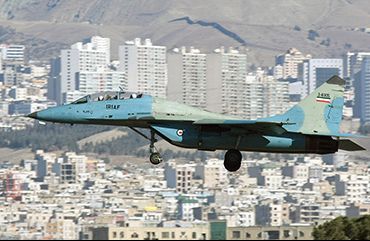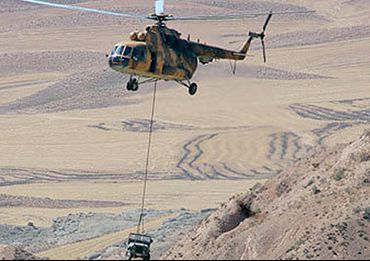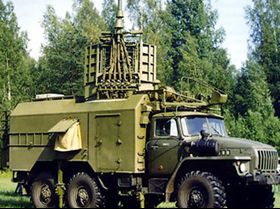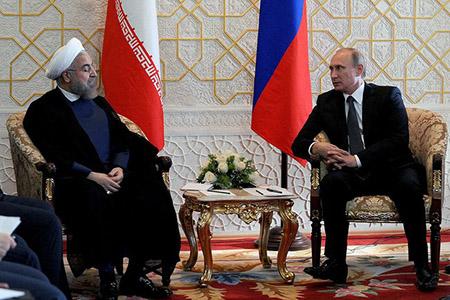Russia and the Islamic Republic of Iran began technical-military cooperation in the 1990. According to various sources, the former Soviet Union would have handed over weapons and military equipment for 900 million dollars by the end of the 1990. Bilateral cooperation was sanctioned by a series of intergovernmental agreements signed in the 1989, 1990 and 1991.
As part of these agreements, Moscow has provided Tehran with MiG-29 Fulcrum fighters, Sukhoi Su-24MK tactical bombers, Kilo 877EKM diesel-electric submarines and S-200VE Vega-E anti-aircraft systems.
Furthermore, based on the agreements drawn up, Iran has licensed T-72 tanks and BMP-2 infantry fighting vehicles.
 In the 1990, Iran received its first fourteen MiG-29 fighters. Deliveries continued in the 1991 with twelve Su-24 bombers and twenty MiG-29 / MiG-29UB fighters. Between the 1990 and the 1991, Iran received for air supremacy entrusted to the MiG-29, 350 air-to-air missiles R-27R and 576 air-to-air missiles R-60. Six other MiG-29 / MiG-29UB were delivered in Iran between the 1993 and the 1994.
In the 1990, Iran received its first fourteen MiG-29 fighters. Deliveries continued in the 1991 with twelve Su-24 bombers and twenty MiG-29 / MiG-29UB fighters. Between the 1990 and the 1991, Iran received for air supremacy entrusted to the MiG-29, 350 air-to-air missiles R-27R and 576 air-to-air missiles R-60. Six other MiG-29 / MiG-29UB were delivered in Iran between the 1993 and the 1994.
Between the 1993 and the 1997, Russia delivered 120 combat vehicles for the infantry BMP-2 and 800 anti-tank missiles 9M111. Between the 1992 and the 1996, Iran received three Kilo 877EKM diesel-electric submarines at the cost of 250 million dollars per boat.
In the early years, 90, the annual average of Russian sales in Tehran, including weapons and military equipment, was 500 million dollars, about 85 per cent of all exports to Iran.
The relationship between Moscow and Tehran abruptly interrupted the 30 June of 1995 with the signing of a bilateral agreement between Russia and the United States. The memorandum provided for the suspension of new conventional military supplies to Iran, while guaranteeing all the contracts previously signed by the end of the 1999. The document was signed by Russian Prime Minister Viktor Chernomyrdin and US Vice-President Al Gore. Also in the same document, Moscow undertook to suspend the supply of spare parts for equipment previously sold.
Beginning with the 2000, Tehran expresses its willingness to resume commercial relations with Moscow, but the treaty signed in the 1995 prevents Iran from having any access to the vast Russian arsenal.
In November of the 2000, Russia notified the United States of its desire to resume relations with Iran, effectively canceling the provisions of the 95 agreement.
In October of the 2001, Russia and Iran signed a military-technical cooperation agreement during an official visit to Moscow by the Iranian defense minister.
At the beginning of the new millennium, Iran confirmed itself as the fourth largest (6,1 per cent) importer of military goods purchased by the Russian company Rosvooruzheniye, after China, India and the United Arab Emirates.
Between the 2001 and the 2002, Russia returns to equip the Iranian Air Force with ammunition and components for the MiG-29 and the Su-24MK.

Also in the 2001, Iran signs a contract with the Russian company Rosoboronexport for the supply of thirty-six Mi-171SH helicopters. All helicopters were delivered in the 2004.
Between the 2000 and the 2003, Iran buys from the Russian company Ulan-Ude Aircraft Plant, twenty-seven civilian versions of the Mil Mi-171 military transport helicopter.
In the 2003, Iran wins three Su-25UBK Frogfoot ground attack planes, purchasing three more in the 2005.
In 2004, the Russian company Kurganmashzavod receives about 60 million dollars from Iran for 300 infantry vehicles for the BMP-2 infantry.
At the beginning of the 2005, Iran buys three Mi-17 helicopters, a specially modified version for the medical service. In the same year, Tehran signed a contract with Moscow for the supply of high-precision 30F39 Krasnopol-M artillery shells.
The 2005 is a very profitable year. Russia and Iran sign a contract from 1,4 billion dollars for the purchase of "special" equipment including 29 vertical-launch missile systems and Tor-M1 SA-15 radio-controlled driving. Moscow also signs a contract to upgrade the entire fleet (24 caccia) of Iran's Su-24 bombers worth 300 million. Another contract provides for the supply of fast patrol boats.
In December of the 2006, Russia delivers twenty-nine Tor-M1 SAM systems to Iran. In February of the 2007, Moscow completes the delivery of 1.200 Tor 9M331 mobile missiles, ready for combat.
In 2007, Russia delivers five S-300PMU-1 / SA-20 Gargoyle systems to Iran for 800 million dollars.
The 9 June of the 2010 the UN Security Council approves a resolution (and related sanctions) against Iran, because of its controversial nuclear program. Among the restrictions, there is also a ban on selling modern equipment in Tehran. The 22 September of the 2010, Russian President Dmitry Medvedev signs an executive order which, according to the resolution of the United Nations Security Council, prohibits all Russian military sales to Iran.
 The sales ban extends to almost any form of conventional weapon system: tanks, armored vehicles, large-caliber artillery, combat aircraft, military helicopters, warships, missiles and missile systems. The ban also covers spare parts, hardware and software necessary to keep these systems running.
The sales ban extends to almost any form of conventional weapon system: tanks, armored vehicles, large-caliber artillery, combat aircraft, military helicopters, warships, missiles and missile systems. The ban also covers spare parts, hardware and software necessary to keep these systems running.
The restrictions do not apply to infantry, artillery and mortar weapons of less than 100 mm caliber, transport helicopters, anti-aircraft guns, radar systems, military vehicles and a number of other systems classified as "intermediate".
In October of the 2011, Iran purchases the 1L222 Avtobaza system from Russia, a mobile radar station designed to disturb and hack enemy drones. It is the first official sale following the introduction of sanctions.
Franco Iacch












